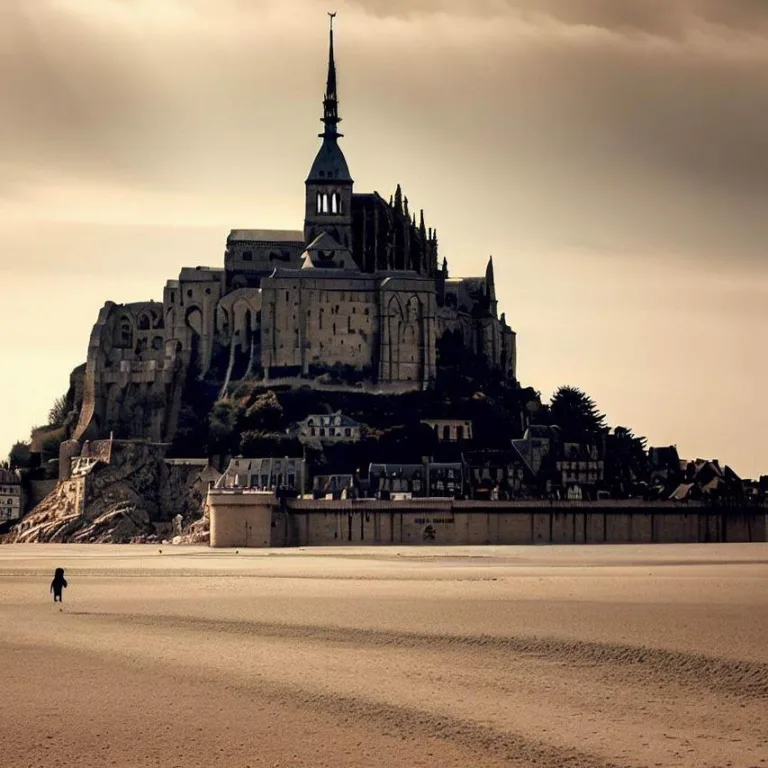Welcome to our in-depth exploration of Mont Saint Michel, a truly remarkable and iconic structure that stands as a testament to both architectural ingenuity and historical significance. Situated on the rugged coast of Normandy, France, Mont Saint Michel has captured the imagination of countless visitors and researchers alike. In this article, we delve into the rich history, unique architecture, and cultural importance of this awe-inspiring site.
The historical journey
The origins of Mont Saint Michel date back to the 8th century when, according to legend, the Archangel Michael appeared to Bishop Aubert of Avranches, instructing him to build a chapel atop the rocky islet. This marked the beginning of a long history of spiritual devotion and construction that would span centuries.
Over the years, Mont Saint Michel evolved from a simple chapel into a complex abbey, often serving as a place of refuge during times of conflict. Its strategic location on the tidal island offered protection and made it a significant stronghold throughout the Middle Ages.
The marvel of architecture
The architecture of Mont Saint Michel is nothing short of breathtaking. Its unique design blends seamlessly with the natural landscape, creating a harmonious union between human ingenuity and nature’s beauty. The abbey is a stunning example of medieval Gothic architecture, characterized by pointed arches, ribbed vaults, and flying buttresses.
The abbey’s structure is built in tiers, with the abbey church at the top, followed by the monk’s living quarters, and the great halls further down. The careful arrangement of these levels allowed for efficient use of space while maintaining the structural integrity of the site.
One of the most fascinating features of Mont Saint Michel’s architecture is its ability to withstand the powerful tides that surround it. The use of durable materials and innovative engineering ensured the longevity of the abbey, even in the face of relentless natural forces.
Cultural and artistic significance
Mont Saint Michel’s significance extends beyond its architectural brilliance. It has been a place of pilgrimage for centuries, drawing people from all walks of life. The abbey’s religious importance is reflected in its stunning interior, adorned with intricate sculptures, stained glass windows, and awe-inspiring murals.
The abbey also played a role in shaping the intellectual and cultural landscape of Europe. The scriptorium, a room dedicated to copying and preserving manuscripts, housed valuable texts that contributed to the spread of knowledge during the Middle Ages.
Faqs about mont saint michel
What is the best time to visit Mont Saint Michel?
The best time to visit is during the shoulder seasons of spring and fall when the weather is pleasant, and the crowds are smaller compared to the peak summer months.
Can I access Mont Saint Michel during high tide?
During high tide, the causeway leading to the island can be submerged. However, shuttle services are available, ensuring access regardless of the tide’s position.
Is Mont Saint Michel a UNESCO World Heritage Site?
Yes, Mont Saint Michel and its bay were designated as a UNESCO World Heritage Site in 1979, recognizing its cultural and natural significance.
Are there guided tours available?
Absolutely, guided tours are available for visitors who want to delve deeper into the history and architecture of Mont Saint Michel.
In conclusion, Mont Saint Michel stands as an extraordinary embodiment of human creativity and history’s imprint on the landscape. Its unique architecture, deep-rooted history, and cultural importance continue to captivate the hearts and minds of those who visit. A journey to Mont Saint Michel is a journey through time, a chance to connect with the past while admiring the remarkable achievements of our ancestors.
Viz také:






